Hartmut Schmidt
Demonstrating the Advantages of Analog Wafer-Scale Neuromorphic Hardware
Dec 03, 2024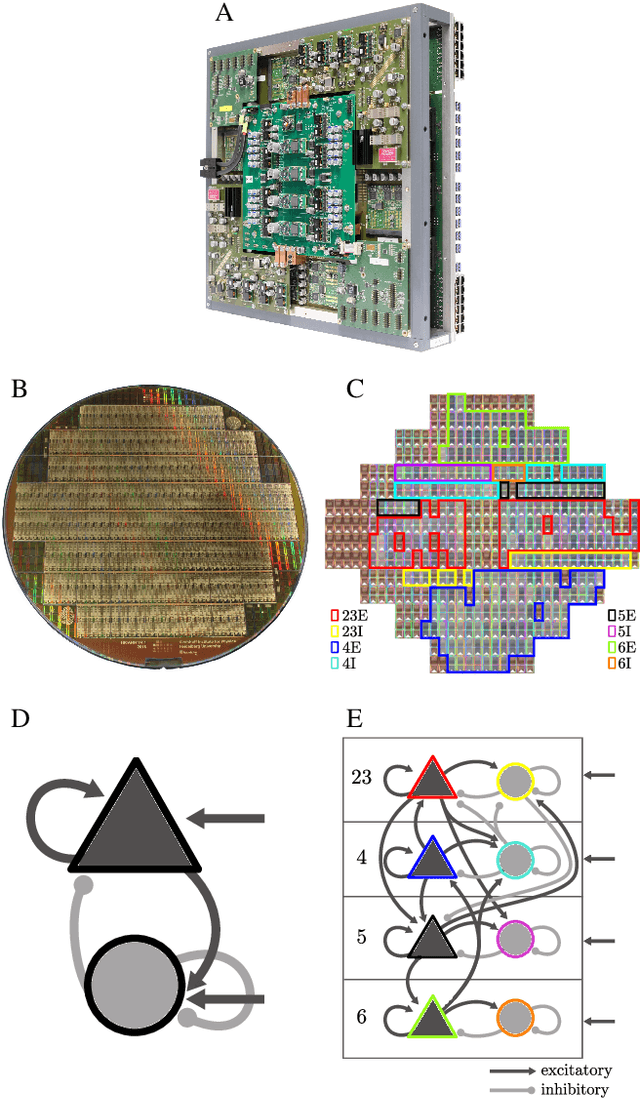
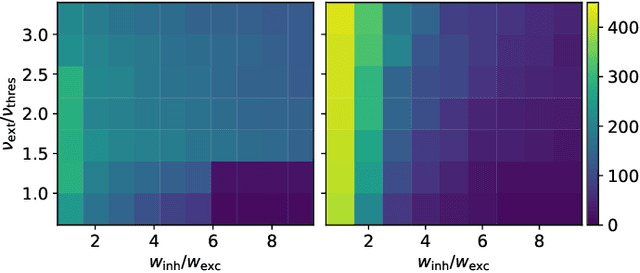
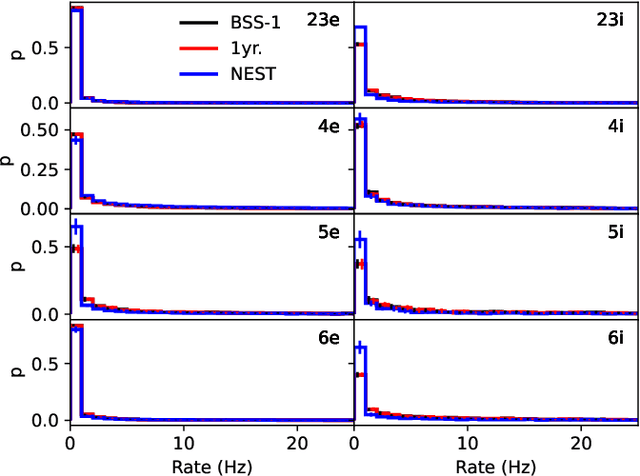
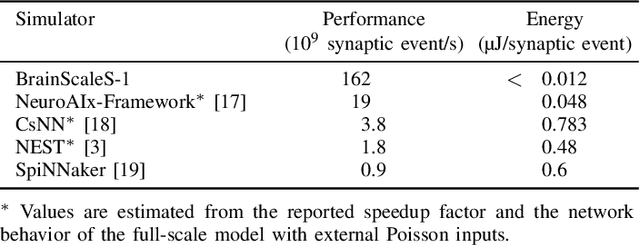
Abstract:As numerical simulations grow in size and complexity, they become increasingly resource-intensive in terms of time and energy. While specialized hardware accelerators often provide order-of-magnitude gains and are state of the art in other scientific fields, their availability and applicability in computational neuroscience is still limited. In this field, neuromorphic accelerators, particularly mixed-signal architectures like the BrainScaleS systems, offer the most significant performance benefits. These systems maintain a constant, accelerated emulation speed independent of network model and size. This is especially beneficial when traditional simulators reach their limits, such as when modeling complex neuron dynamics, incorporating plasticity mechanisms, or running long or repetitive experiments. However, the analog nature of these systems introduces new challenges. In this paper we demonstrate the capabilities and advantages of the BrainScaleS-1 system and how it can be used in combination with conventional software simulations. We report the emulation time and energy consumption for two biologically inspired networks adapted to the neuromorphic hardware substrate: a balanced random network based on Brunel and the cortical microcircuit from Potjans and Diesmann.
From Clean Room to Machine Room: Commissioning of the First-Generation BrainScaleS Wafer-Scale Neuromorphic System
Mar 22, 2023Abstract:The first-generation of BrainScaleS, also referred to as BrainScaleS-1, is a neuromorphic system for emulating large-scale networks of spiking neurons. Following a "physical modeling" principle, its VLSI circuits are designed to emulate the dynamics of biological examples: analog circuits implement neurons and synapses with time constants that arise from their electronic components' intrinsic properties. It operates in continuous time, with dynamics typically matching an acceleration factor of 10000 compared to the biological regime. A fault-tolerant design allows it to achieve wafer-scale integration despite unavoidable analog variability and component failures. In this paper, we present the commissioning process of a BrainScaleS-1 wafer module, providing a short description of the system's physical components, illustrating the steps taken during its assembly and the measures taken to operate it. Furthermore, we reflect on the system's development process and the lessons learned to conclude with a demonstration of its functionality by emulating a wafer-scale synchronous firing chain, the largest spiking network emulation ran with analog components and individual synapses to date.
The Operating System of the Neuromorphic BrainScaleS-1 System
Mar 30, 2020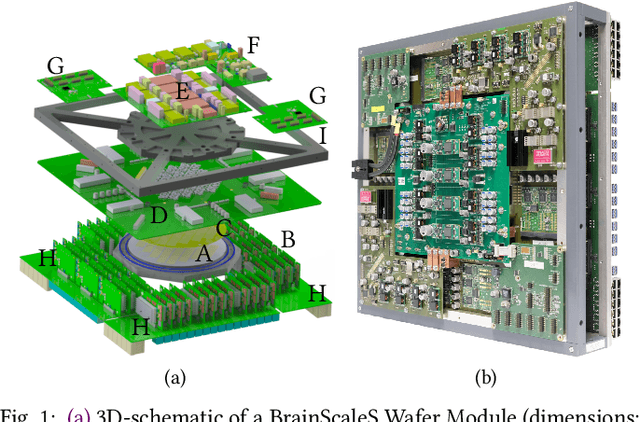
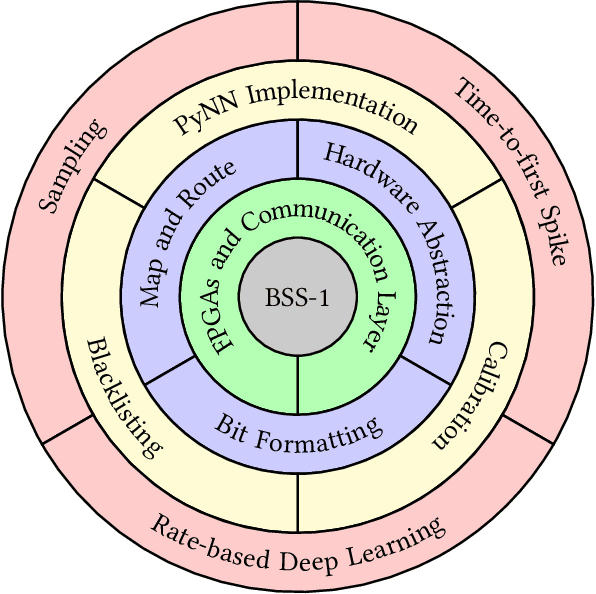
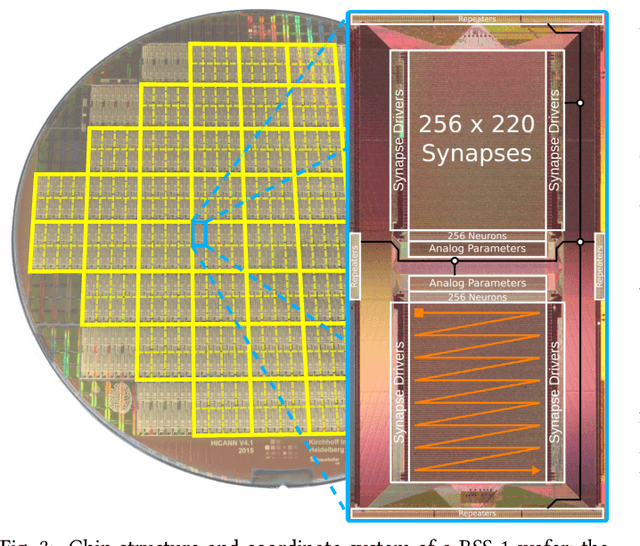
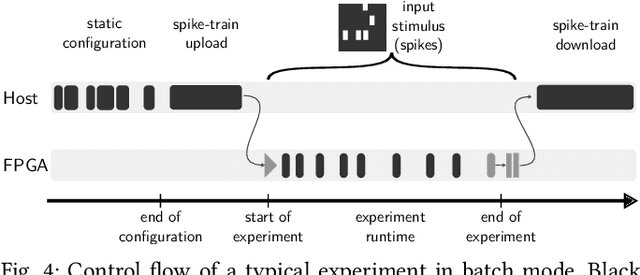
Abstract:BrainScaleS-1 is a wafer-scale mixed-signal accelerated neuromorphic system targeted for research in the fields of computational neuroscience and beyond-von-Neumann computing. The BrainScaleS Operating System (BrainScaleS OS) is a software stack giving users the possibility to emulate networks described in the high-level network description language PyNN with minimal knowledge of the system. At the same time, expert usage is facilitated by allowing to hook into the system at any depth of the stack. We present operation and development methodologies implemented for the BrainScaleS-1 neuromorphic architecture and walk through the individual components of BrainScaleS OS constituting the software stack for BrainScaleS-1 platform operation.
 Add to Chrome
Add to Chrome Add to Firefox
Add to Firefox Add to Edge
Add to Edge